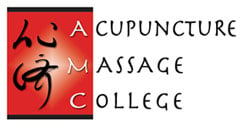Cupping, or suction cup therapy, is a Traditional Chinese Medicine (TCM) method of stimulating acupuncture points by applying a glass, bamboo or metal cup to the skin. A vacuum created by heating and depressurizing the air draws the skin and superficial muscle layer into the cup. This technique stimulates blood flow, relaxes congested muscles, treats general stiffness in the body, and relieves back pain.
Frequently applied after acupuncture, cupping is used for treatment of sprains, soft tissue injuries, fluid retention in the lungs, bronchitis, congestion, asthma, and chronic cough. Cupping is also recommended for the treatment of gastrointestinal disorders. Alleviating swelling and pain, cupping addresses a variety of acute ailments by removing stasis, or energy blockages. Cupping therapies often follow the acupoint selection pattern used in acupuncture therapy; back points in fleshy areas of the body are preferred sites. Increased blood flow into the cupping area allows the body region to heal more quickly and brings toxins to the surface, which can be released through the pores.
By causing tissues to release toxins, cupping clears energy blockages and activates the lymphatic system. Several cups may be placed on the body simultaneously and left in place for up to 15 minutes. Traditional cupping utilizes heated cups that simulate the moxibustion therapy applied during acupuncture. Acupuncture physicians may utilize cupping in addition to acupuncture when acute or chronic deep tissue pain affects certain regions of the body. In some cases, fixed position cupping is combined with a technique called gliding cupping in which the cups may be moved to other acupoint locations along different energy channels or meridians during a treatment session.
Acupuncture & Massage College’s Masters of Oriental Medicine program prepares graduates for careers as acupuncture physicians. For more information about the program call Joe Calareso at (305) 595-9500 or visit AMC’s website at www.amcollege.edu for complete program information and class descriptions. Prospective students are welcome to visit for a campus tour or attend classes.

 (305) 595-9500
(305) 595-9500






